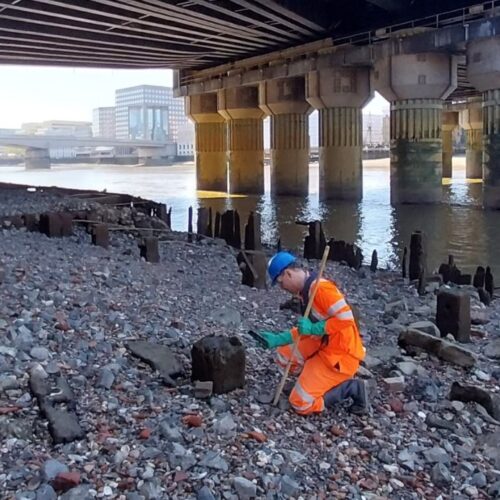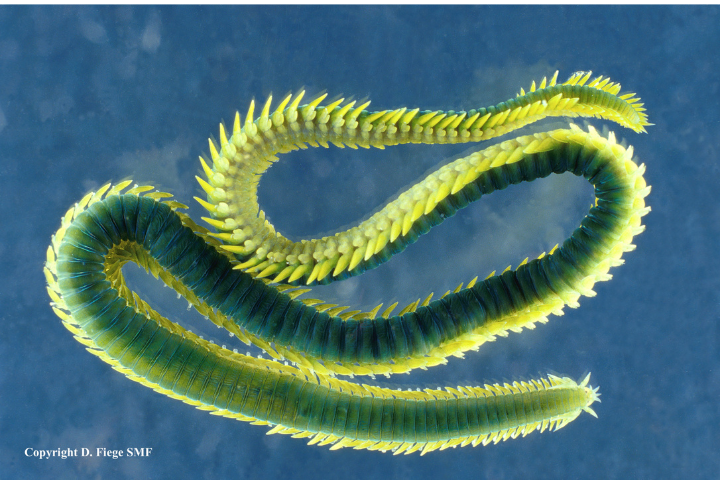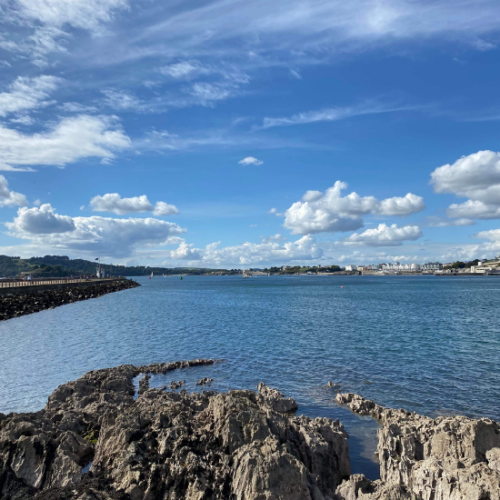In the UK alone, over 11 million people live near the coast. With sea levels predicted to rise and the severity of storms forecast to increase, many people’s homes and livelihoods are likely to come under threat in coming decades. Hard engineering options for storm defences, such as the construction of sea walls or groynes, tend to be expensive to build and maintain, and can have a negative impact on the landscape and environment. Therefore, a natural alternative – the creation or enhancement of natural coastal wetlands – is becoming more common.
Coastal wetlands as storm defences
Coastal wetlands provide a myriad of benefits, such as increasing biodiversity and water quality, and acting as nursery grounds and carbon sinks. They also help with coastal protection in a number of ways. The physical structure of the vegetation slows water currents and helps to absorb the energy of incoming waves, reducing the height of waves when they reach the shore. As a result, an area with a coastal wetland may not require manmade storm defences, or only require a smaller, and cheaper, sea wall than if it had no wetland [1]. The slowing of water currents has the additional benefit of reducing and even reversing coastal erosion, as this increases the rate at which sediment is deposited on the shore. Over time this sediment is consolidated by the root systems of the plants, increasing resilience to coastal erosion, as well as trapping carbon.
Due to all these benefits, and the fact that wetlands are in decline, efforts have been made to restore coastal wetlands through the planting of new vegetation. However, in many cases, simple replanting is not sufficient to restore or even to simply maintain existing habitat, particularly where sediment supply is outpaced by rates of erosion and sea level rise. In these instances, habitats are at risk of becoming completely inundated and “drowned” without additional intervention, but one solution is to use dredged sediment to keep these habitats above water.
Dredged sediment to the rescue
Globally, activities such as flood risk alleviation and the maintenance of ports, harbours and other navigable waterways lead to the removal of huge volumes of sediment via dredging. Every year around 40-50 million cubic meters of sediment is dredged from ports and harbours in the UK alone [2]. What happens to all this sediment? Typically, dredged material is disposed of further out to sea, which requires close environmental monitoring. However, recently there has been a movement towards beneficial reuse of this material as a resource, as opposed to a by-product to be disposed of [3].
Exactly how dredged material can be utilised varies depending on factors such as the type of dredged material (rock, gravel, sand, mud, or clay) and type of habitat in question. Dredged material can be directly deposited onto a site, known as thin layer placement, to enhance or restore an existing wetland. Usually, this layer is only around 20cm deep and this method has been used to protect coastal marshes from predicted sea level rise [4].
Another application for dredged material is for managed realignment. Managed realignment can be thought of as giving land back to the sea to reduce both coastal flooding and erosion. Sea walls have historically been built to drain coastal marshes, usually to make them more suitable for agriculture [6]. However, over time, this reclaimed land often subsides and simply breaching existing seawalls may not result in the area returning to its previous state. In these situations, dredged material can provide the sediment needed to raise land to an appropriate height for a new marsh to establish. In the San Francisco Bay, several million cubic meters of material from port maintenance dredging was used for this very purpose. By raising the ground level and creating berms to reduce wave erosion, an area of marsh and mudflat was created. Within 3 years, the created marsh had begun to be colonised by marsh plants and over 140,000 wading birds had been recorded at the site [7].
Complications with dredged materials
However, beneficial reuse of dredged material is not always straightforward, as simply spreading sediment across an area may not result in the sediment being retained there long-term. It must settle for long enough to be consolidated or for new plant growth to occur before the sediment is washed away [3]. Therefore, in some cases, pre-treatment is necessary to yield sediment which is solid enough to not simply wash away. This process is known as dewatering and may be achieved in a number of different ways. Where there is sufficient space, settlement beds can be built which allow water to drain back into the waterbody. The remaining sediment can be moved for use elsewhere or planted with vegetation in situ to begin the creation of new habitat. Alternatively, sediment can be treated using geotextile tubes, essentially large porous containers which retain sediment while allowing water to drain out. These containers can then be directly used, for example, to construct seawalls to provide shelter as part of a saltmarsh creation [5]. If the sediment is going to be used further from the dredge site, geotextile tubes make moving sediment easier and also reduce transport costs by removing water, thus reducing the weight for transport. There are also a number of mechanical dewatering devices which use a range of fine screens and pressure to force water from sediment. While this method is often the fastest, it is also usually the most expensive, requiring heavy machinery and specialised equipment.
One of the most common reservations regarding the use of dredged material, especially from industrial areas such as ports, is the level of contaminants present within the sediment. While some dredge material may be contaminated, studies have shown that 85 to 90% of sediment removed during dredge activities is relatively uncontaminated and suitable for re-use without chemical treatment [8].
Although development and urbanisation around our coastlines has historically come at the price of degrading the coastal environment, through proper planning and beneficial reuse schemes we should see an enhancement and expansion of coastal wetlands alongside future developments, bringing benefits for us and the natural environment.
References
- Gardner, R.C. and Finlayson, C., 2018, October. Global wetland outlook: state of the World’s wetlands and their services to people. In Ramsar Convention Secretariat.
- Precipitating a SEA Change in the Beneficial Use of Dredged Sediment (SEABUDS) RSPB Technical report, 2018 seabuds-report.pdf (rspb.org.uk)
- Baptist, M.J., Gerkema, T., Van Prooijen, B.C., Van Maren, D.S., Van Regteren, M., Schulz, K., Colosimo, I., Vroom, J., Van Kessel, T., Grasmeijer, B. and Willemsen, P., 2019. Beneficial use of dredged sediment to enhance salt marsh development by applying a ‘Mud Motor’. Ecological engineering, 127, pp.312-323.
- O’Donnell, J., Vaudrey, J., Tobias, C., French, R., Schenck, P. and Lin, C., 2018. Beneficial Use of Dredged Material for Salt Marsh Restoration and Creation in Connecticut.
- Ashis, M., 2015. Application of geotextiles in coastal protection and coastal engineering works: an overview. Res. J. Environ. Sci, 4(4), pp.96-103.
- Dixon, M., Morris, R.K., Scott, C.R., Birchenough, A. and Colclough, S., 2008, June. Managed realignment–lessons from Wallasea, UK. In Proceedings of the Institution of Civil Engineers-Maritime Engineering (Vol. 161, No. 2, pp. 61-71).
- CEDA Central Dredging Associtaion, Counter subsidence and creation of natural habitat | Central Dredging Association Central Dredging Association
- IADC, International Association of Dredging Companies. Dredged Material as a Resource. Most dredged material can be used as … (iadc-dredging.com)











